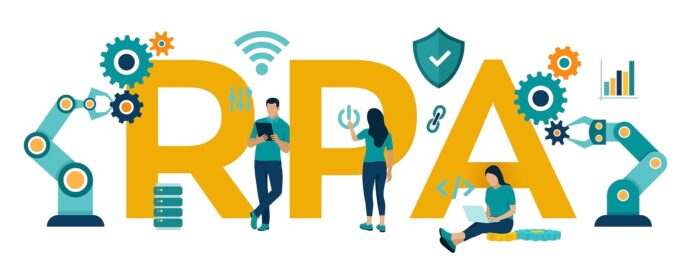Financial RPA benefits explored.
Financial operations require constant focus and a wealth of financial knowledge from financial officers. It can be difficult to find reliable employees when you need them. Fortunately, today, the software can replace employees.
Software that deals with the automation of financial processes offers benefits to companies that adopt the technology. Recent research by Gartner has proven that RPA solutions perform almost three times more effectively than ordinary employees and cost five times less. This article will discuss what benefits robotic process automation (RPA) brings to businesses and how it can be implemented into the workflow.
The concept of financial RPA
First of all, you should understand what RPA is. This kind of software helps financial officers to reduce the number of repetitive tasks. Robots, unlike people, can work all day long. That provides businesses with significant productivity growth as machines manage all low-level tasks while human employees take care of major tasks.
Advantages of financial RPA
There are many benefits to adopting RPA. Let’s explore some of the key ones.
Time efficiency
The first and most obvious advantage is the performance growth. Robots perform routine tasks much faster than humans. Moreover, it no longer depends on the experience of your employee. With RPA, everything is about the quality of code.
One of the use cases of RPA in finance is invoice processing for accounting software development. When creating an invoice, employees have to gather and match data from different sources. Such detailed work is often followed by mistakes which impacts the customer experience. However, using RPA to get all the required data results in more accurate invoicing.
With the decrease in time required to complete the tasks, the whole process becomes more cost-effective. On top of that, your RPA solutions can replace your experienced employees so that you can reassign them to other tasks. Thus, you don’t have to waste money on hiring new employees.
Customer Treatment
Customers can benefit from RPA systems as well as business owners. There are many use cases for RPA solutions that can improve customer experience — automated invoicing, instant information about interest rates, customer onboarding, and other activities. For example, in small bank offices, customers have to waste more time due to bank employees’ low capacity. With robotic processes, users can register accounts on their own. Thus, the number of clients in the offices will be reduced, and employees can perform other tasks.
Financial RPA Helps With Compliance With Security Guidelines
One of the financial sphere’s main regulations is ‘know your client’ or ‘know your customer’ guidelines. Financial establishments comply with these guidelines to prevent money-laundering and financial fraud. To cut a long story short, there are three main points in this set of regulations:
- Customer identification
- Monitoring of transactions
- Risk management
RPA software simplifies financial security officers’ lives by gathering clients’ information from various sources like publicly available databases, documents, and websites. This information can be helpful to analysts who conduct a financial risk assessment.
How to implement Financial RPA in your business?
RPA benefits are outstanding, but they’re worth nothing if you don’t understand how to integrate RPA software in your business. Now, we’ll go through the main steps required to develop such software for your needs.
Estimate the expenses
First, you have to come up with a detailed estimate of your project. Decide on a process that will be automated. If it’s your first RPA solution, it’s better to focus on processes that require manual data processing, data transmission, and other repetitive tasks. These processes don’t require complex algorithms and often consume a lot of working time. Thus, you’ll be able to make your money back soon. When the process is defined, you have to create a feature list to explain your vision of the product to the software development company. When all details are finalized, contact your tech partner and ask for the project estimate.
Assess the project’s ROI
It’s crucial to compare potential income against the cost of implementing the project. To assess the ROI, you have to understand your current expenses on the task you’re going to automate. Then, you should calculate the amount of work that the RPA solution will handle. Mind that if you’re going to save around $500/month when the project costs you over $100,000, you should possibly reconsider the whole RPA model. In this case, the ROI term is too long.
Understand your processes
Before the development, you have to take care of standardization. RPA, like any other computer software, works according to a strict algorithm. That’s why, before the integration, you have to understand and organize the process you want to automate. It should have a straightforward algorithm so that your software will always deliver the results you expect.
Wrapping up
RPA can bring a lot of advantages to the financial sector. It boosts your employees’ productivity and makes routine processes less time-consuming and more cost-effective. However, to create a reliable RPA solution, you have to find an experienced software development company.





